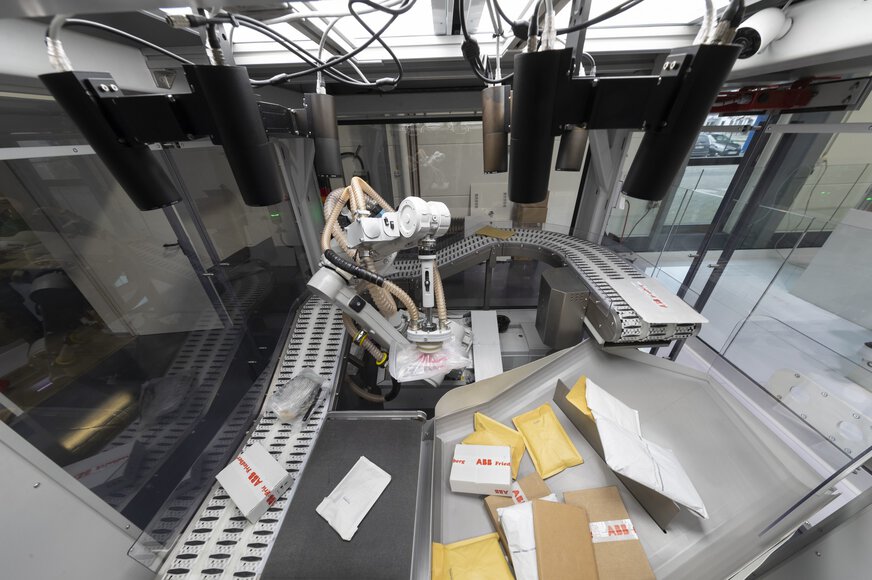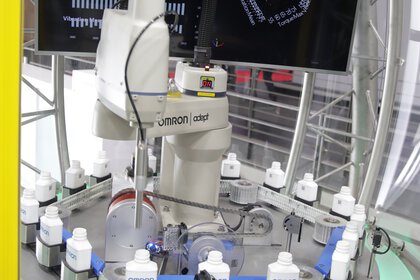Opportunities and limits of AI: How Autonomous Is Autonomous Production?
How much autonomy does production tolerate? What are the opportunities and limits of artificial intelligence? A prominent survey with AI professionals from ABB, Siemens, Omron, Schaeffler, DFKI and the robotics startup VisCheck.
What can artificial intelligence do in the production of the future? Where does it make sense and where doesn’t it? If you believe the big buzzword hype around terms like Industry 4.0, the fate of Germany's factories is sealed: Artificial intelligence will take over and pull the strings. Production will become autonomous. And this means that sooner or later, everything will be self-controlling. Or maybe not?
For the correct answer to this question, we first need a closer understanding of the terms: And it's not that easy for artificial intelligence, because there is no clear definition of it. Simply explained, artificial intelligence means
..the attempt to transfer human learning and thinking to a computer and thereby give it intelligence. Instead of being programmed for every purpose, AI should be able to find answers and solve problems independently.
What autonomous production means can be deduced a bit from this. In fact, autonomous production goes far beyond highly automated processes and means production that controls itself, flexibly regulates and optimizes itself and is able to make decisions independently.
Consequently, if production is autonomous, it is strongly AI-driven. However: Completely or to what degree?

Where is artificial intelligence used today?
“Up to now, AI has only been used very selectively at the tool level in Germany,” Christoph Hildebrandt said, head of image processing and non-destructive testing technology in special-purpose machine manufacturing at Schaeffler. As a tool for what? Axel Lorenz, Head of Automation Systems at Siemens Digital Industries, specified: “For example, artificial intelligence is used today to create transparency and to make suggestions for humans to act. In the future, however, we will see a major step toward independent decisions in the development of AI applications in manufacturing. The degree of autonomy depends on the area of application. For example, this is different in the protection room, in tedious tasks that can result in errors, than in the use of AI for the faster development and scaling of innovative business ideas.”
And of course, the cost-effectiveness of autonomous systems is the decisive criterion in production for their implementation and use. Tim Foreman, European R&D Director at Omron Europe, sees enormous potential in intelligent process optimization and control: “Ideally, AI helps the user to identify and understand cause-effect relationships of undesirable deviations that negatively affect product quality. At the same time, AI can anticipate effects on product quality and even react in real time if necessary.” For this purpose, artificial intelligence can record very large amounts of data and process them into information. For Foreman, such optimization also has an impact on the qualification of employees. This is when sensors and automated visual tools help to improve quality at every step of the production process and thus train employees on the fly.

Incidentally, artificial intelligence is also economical when it comes to building bridges between technology islands, as Guido Bruch from robotics start-up VisCheck explains: “For example, between an old machine that has to be operated individually and a robot that could operate a machine mechanically but is ultimately 'stupid'.”
To get a better idea of what AI-powered autonomous production could look like in the future, a look at the next stage in 2030 is helpful. Scenarios provided by:
We are currently experiencing the phase in which AI is entering the robot application level. Semi-autonomous automation cells can thereby be created. In 2030, instead of serial production stations, production will consist of a network of these semi-autonomous cells, which are flexibly linked to each other, for example by means of driverless transport systems (also called guided vehicle systems). Production staff are in turn supported by a number of smart apps, enabling them to optimize, anticipate and control systems even better thanks to their creativity.
In the future, products will only be produced on order. Independent production modules will provide skills and services in factory halls. A product knows its properties and the necessary steps for its production. It retrieves them from the modules as required. Coordination between product and machine takes place automatically. A product will seek its own way through production.
Future AI robots will be able to control movements based on visual and tactile senses like humans do and automatically create optimized mounting methods based on knowledge of previous assembly work.
First of all, we at Schaeffler expect increased tool prevalence. Self-optimizing cobot and driverless transport systems, camera-based automated surface checks as well as speech and text recognition will be used throughout production. Smart end-of-line systems will provide feedback for production control.
New simulation capabilities, autonomous systems and cloud edge applications will significantly change the manufacturing industry. Future scenarios include completely self-orchestrating factories.
AI could get a boost if there were two-armed robots with hands as grippers. This would be devastating for the labor market, but AI would enable entirely new use cases.
In the end, the application sets the tone. AI has to pay off. There will be no autonomous production for its own sake. But if AI pays off, it will more than ever shape the image of production of the future.
